-
 Bitcoin
Bitcoin $108,262.4325
-1.40% -
 Ethereum
Ethereum $2,518.2882
-2.94% -
 Tether USDt
Tether USDt $1.0003
-0.01% -
 XRP
XRP $2.2262
-1.71% -
 BNB
BNB $653.9254
-1.55% -
 Solana
Solana $148.1036
-3.11% -
 USDC
USDC $1.0000
0.01% -
 TRON
TRON $0.2829
-1.45% -
 Dogecoin
Dogecoin $0.1639
-4.82% -
 Cardano
Cardano $0.5742
-4.43% -
 Hyperliquid
Hyperliquid $38.9506
-3.95% -
 Sui
Sui $2.9040
-4.34% -
 Bitcoin Cash
Bitcoin Cash $484.8307
-2.62% -
 Chainlink
Chainlink $13.1971
-3.73% -
 UNUS SED LEO
UNUS SED LEO $9.0822
0.51% -
 Avalanche
Avalanche $17.8613
-4.01% -
 Stellar
Stellar $0.2385
-2.26% -
 Toncoin
Toncoin $2.7570
-3.88% -
 Shiba Inu
Shiba Inu $0.0...01145
-3.99% -
 Litecoin
Litecoin $86.9999
-2.43% -
 Hedera
Hedera $0.1538
-3.90% -
 Monero
Monero $313.7554
-2.03% -
 Polkadot
Polkadot $3.3681
-5.08% -
 Dai
Dai $1.0000
0.00% -
 Ethena USDe
Ethena USDe $1.0001
-0.01% -
 Bitget Token
Bitget Token $4.4401
-2.97% -
 Uniswap
Uniswap $6.9644
-8.41% -
 Pepe
Pepe $0.0...09666
-4.79% -
 Aave
Aave $266.5686
-5.04% -
 Pi
Pi $0.4713
-4.95%
Where can I check the transaction record of Exodus? Can it be exported?
Exodus allows you to check and export your crypto transaction history in CSV format, useful for tax purposes and personal record-keeping.
May 09, 2025 at 01:56 pm
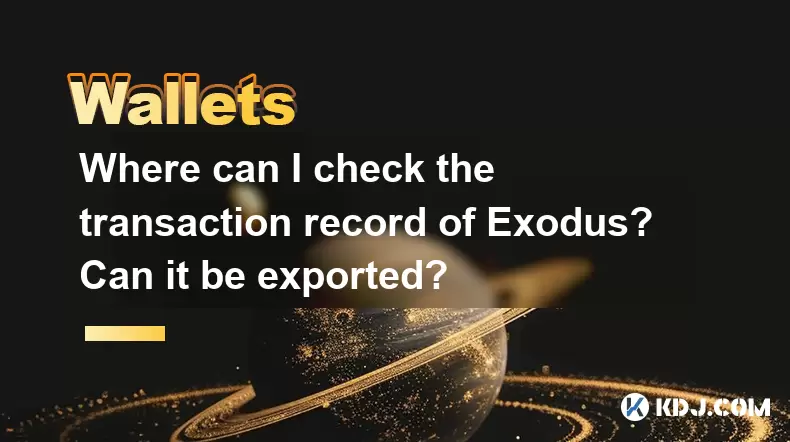
When it comes to managing your cryptocurrency transactions, it's crucial to keep track of your transaction records. Exodus, a popular cryptocurrency wallet, offers users the ability to check their transaction history directly within the application. This article will guide you through the process of checking your transaction records in Exodus and explain whether these records can be exported for further use.
Checking Transaction Records in Exodus
To check your transaction records in Exodus, follow these steps:
- Open the Exodus Wallet: Launch the Exodus application on your computer or mobile device.
- Select the Wallet: Navigate to the wallet that contains the cryptocurrency for which you want to view transactions. Exodus supports a variety of cryptocurrencies, so ensure you select the correct one.
- View Transaction History: Once you are in the specific wallet, you will see an option labeled Transactions or Activity. Click on this to access your transaction history.
In the transaction history section, you will find a detailed list of all the transactions associated with that particular cryptocurrency wallet. Each entry will include the date, amount, and the address to which the transaction was sent or received. You can also see the transaction hash, which is a unique identifier for each transaction on the blockchain.
Can Transaction Records Be Exported from Exodus?
Exodus does provide the functionality to export your transaction records, which can be particularly useful for tax purposes, auditing, or personal record-keeping. Here's how you can export your transaction history:
- Access the Transaction History: Follow the steps mentioned above to get to the transaction history page.
- Export Transactions: Look for an option labeled Export Transactions or Download CSV. This option might be located at the bottom or top of the transaction list.
- Choose the Export Format: Exodus typically allows you to export the data in CSV format, which is compatible with most spreadsheet software like Microsoft Excel or Google Sheets.
- Save the File: Once you select the export option, you will be prompted to save the file to your device. Choose a location where you can easily access the file later.
The exported CSV file will contain detailed information about each transaction, including the date, time, amount, and transaction hash. This data can be used to analyze your cryptocurrency activities or to prepare for tax reporting.
Understanding the CSV File
After exporting your transaction records from Exodus, you might find the CSV file a bit overwhelming at first. Here's a breakdown of what you might typically see in the CSV file:
- Date: The date on which the transaction occurred.
- Time: The exact time of the transaction.
- Type: Indicates whether the transaction was a send or receive.
- Amount: The amount of cryptocurrency involved in the transaction.
- Currency: The type of cryptocurrency used in the transaction.
- Transaction Hash: A unique identifier for the transaction on the blockchain.
- Address: The cryptocurrency address to which the transaction was sent or from which it was received.
Understanding these columns will help you make the most out of your exported data. You can use this information to track your investment performance, prepare tax documents, or simply keep a record of your cryptocurrency activities.
Additional Tools for Transaction Management
While Exodus provides a straightforward way to check and export transaction records, there are additional tools and services that can enhance your transaction management experience. These tools can offer more advanced features such as automated tax calculations, portfolio tracking, and detailed analytics.
- Crypto Tax Software: Services like CoinLedger or Koinly can import your Exodus CSV file and automatically calculate your tax liabilities based on your transaction history.
- Portfolio Trackers: Applications like CoinStats or Blockfolio allow you to track the performance of your cryptocurrency investments across multiple wallets, including Exodus.
- Blockchain Explorers: For a more in-depth look at your transactions, you can use blockchain explorers like Blockchain.com or Etherscan to view detailed information about each transaction using the transaction hash provided in your Exodus transaction history.
Security Considerations When Exporting Transaction Records
When exporting your transaction records from Exodus, it's important to consider the security implications. Your transaction history contains sensitive information about your cryptocurrency activities, and it's crucial to handle this data with care.
- Secure Storage: Store the exported CSV file in a secure location, preferably on an encrypted drive or a secure cloud storage service with strong password protection.
- Data Privacy: Be cautious about sharing your transaction data with third parties. Only use trusted services and ensure you understand their privacy policies.
- Regular Backups: Regularly back up your transaction records to prevent data loss. Consider keeping both digital and physical copies for added security.
By following these security best practices, you can safely manage your transaction records and protect your financial information.
Frequently Asked Questions
Q1: Can I view my transaction history on the mobile version of Exodus?
Yes, you can view your transaction history on the mobile version of Exodus. The steps are similar to the desktop version: open the app, select the wallet, and navigate to the Transactions or Activity section.
Q2: Does Exodus store my transaction data on their servers?
No, Exodus is a non-custodial wallet, which means it does not store your transaction data on their servers. All your data is stored locally on your device, ensuring your privacy and security.
Q3: Can I import my Exodus transaction history into other cryptocurrency wallets?
Generally, you cannot directly import your Exodus transaction history into other wallets. However, you can export the data as a CSV file and use it with other services that support CSV imports for analysis or tax purposes.
Q4: How long does Exodus keep my transaction history?
Exodus keeps your transaction history as long as you have the wallet installed on your device. If you uninstall the app, you will lose access to your transaction history unless you have exported it beforehand.
Disclaimer:info@kdj.com
The information provided is not trading advice. kdj.com does not assume any responsibility for any investments made based on the information provided in this article. Cryptocurrencies are highly volatile and it is highly recommended that you invest with caution after thorough research!
If you believe that the content used on this website infringes your copyright, please contact us immediately (info@kdj.com) and we will delete it promptly.
- Bitcoin's Pattern Break: Are HODLers the Key to the Next Surge?
- 2025-07-04 18:50:12
- Bitcoin Price, Trump's Bill, and the $150K Dream: A NYC Take
- 2025-07-04 19:50:12
- Ethereum, LILPEPE, and the July Bounce: Will Pepe Steal ETH's Thunder?
- 2025-07-04 19:10:12
- Binance Institutional Loans: Unlocking 4x Leverage and Zero Interest for Whales
- 2025-07-04 19:15:12
- Bitcoin Bull Run: Analysts Eye Peak in Late 2025?
- 2025-07-04 19:20:13
- Pepe Indicators, Bullish Forecast: Can the Meme Coin Rally?
- 2025-07-04 19:25:12
Related knowledge
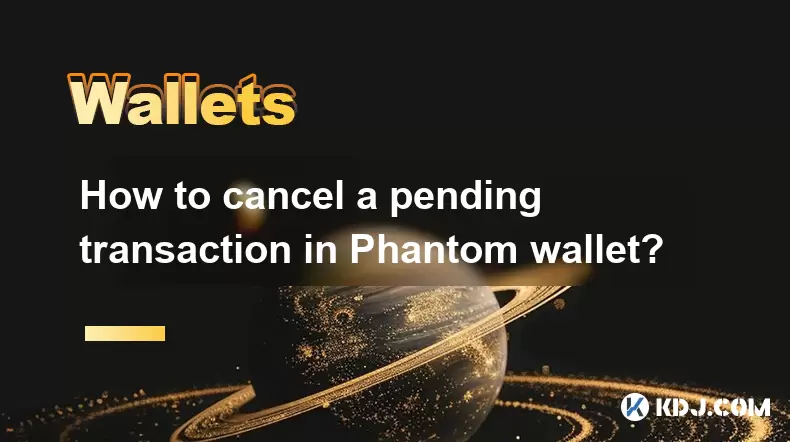
How to cancel a pending transaction in Phantom wallet?
Jul 03,2025 at 07:21pm
Understanding Pending Transactions in Phantom WalletA pending transaction in the Phantom wallet occurs when a user initiates a transfer or interaction with the Solana blockchain, but it hasn't yet been confirmed by the network. This can happen due to various reasons such as low transaction fees, network congestion, or incorrect gas settings. It's import...
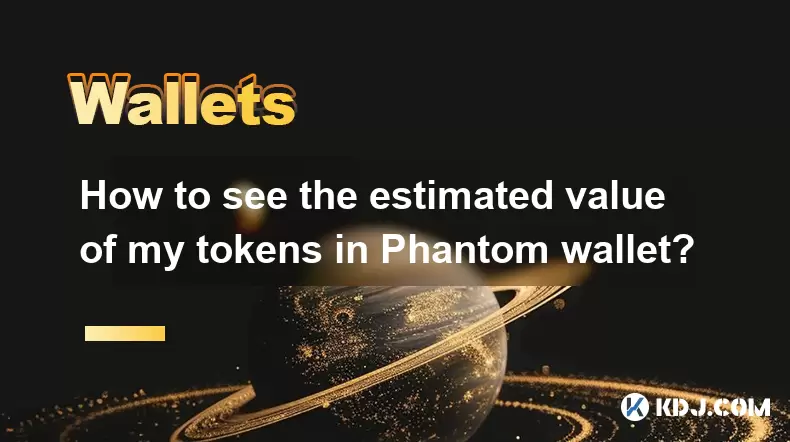
How to see the estimated value of my tokens in Phantom wallet?
Jul 04,2025 at 12:21am
What is Phantom Wallet?Phantom wallet is one of the most popular cryptocurrency wallets designed for the Solana blockchain. It allows users to store, send, receive, and manage various tokens built on Solana, including SPL tokens and NFTs. The wallet offers a user-friendly interface, making it accessible for both beginners and advanced users in the crypt...
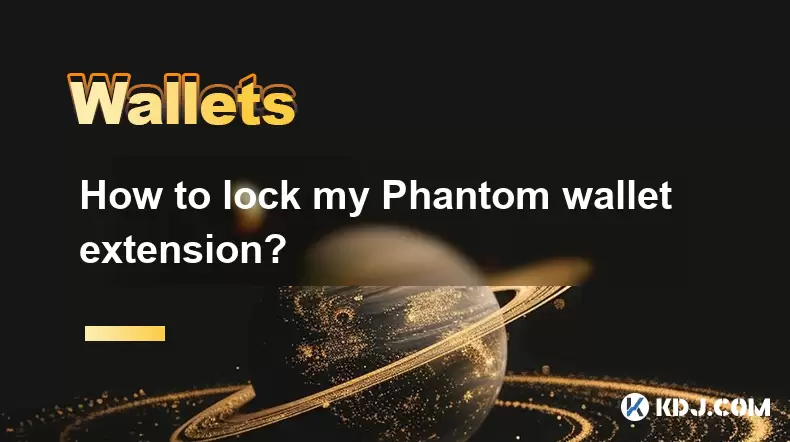
How to lock my Phantom wallet extension?
Jul 03,2025 at 11:14am
What Is the Phantom Wallet and Why Lock It?The Phantom wallet is a popular non-custodial cryptocurrency wallet designed for interacting with the Solana blockchain. Supporting both browser extensions and mobile apps, Phantom allows users to store, send, receive, and stake SOL tokens, as well as interact with decentralized applications (dApps). Securing y...

Does Phantom wallet offer two-factor authentication (2FA)?
Jul 03,2025 at 09:00am
Understanding Phantom Wallet and Its Security FeaturesPhantom wallet is a widely used non-custodial cryptocurrency wallet that supports the Solana blockchain. It allows users to store, send, receive, and interact with decentralized applications (dApps) seamlessly. As security is a top priority for any crypto wallet user, security features like two-facto...
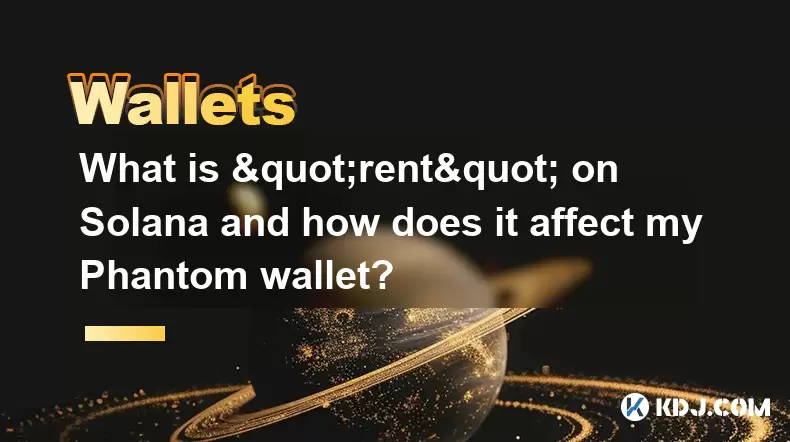
What is "rent" on Solana and how does it affect my Phantom wallet?
Jul 02,2025 at 08:35pm
Understanding 'Rent' on SolanaIn the context of Solana, the term 'rent' refers to a storage fee that users pay for maintaining data on the blockchain. Unlike Ethereum, where storage costs are paid once via gas fees during contract deployment, Solana implements a recurring cost model to ensure efficient usage of network resources. This means that any acc...
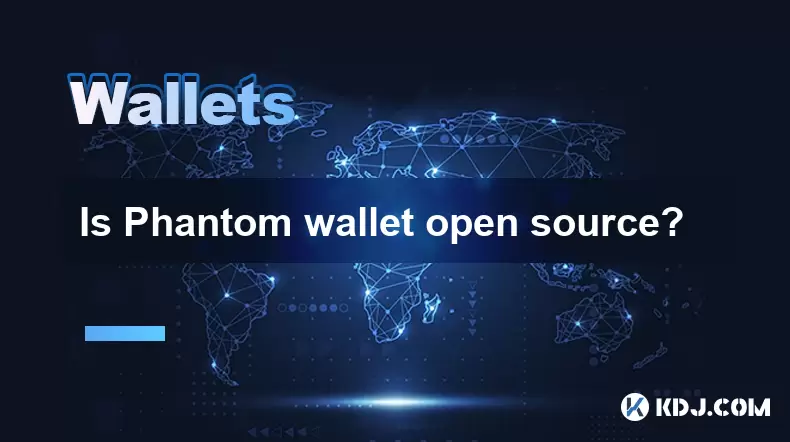
Is Phantom wallet open source?
Jul 03,2025 at 12:29am
What is Phantom Wallet?Phantom wallet is a non-custodial cryptocurrency wallet primarily designed for the Solana blockchain. It allows users to store, send, receive, and interact with decentralized applications (dApps) on the Solana network. The wallet is available as a browser extension and mobile application, offering a seamless experience for both be...

How to cancel a pending transaction in Phantom wallet?
Jul 03,2025 at 07:21pm
Understanding Pending Transactions in Phantom WalletA pending transaction in the Phantom wallet occurs when a user initiates a transfer or interaction with the Solana blockchain, but it hasn't yet been confirmed by the network. This can happen due to various reasons such as low transaction fees, network congestion, or incorrect gas settings. It's import...

How to see the estimated value of my tokens in Phantom wallet?
Jul 04,2025 at 12:21am
What is Phantom Wallet?Phantom wallet is one of the most popular cryptocurrency wallets designed for the Solana blockchain. It allows users to store, send, receive, and manage various tokens built on Solana, including SPL tokens and NFTs. The wallet offers a user-friendly interface, making it accessible for both beginners and advanced users in the crypt...

How to lock my Phantom wallet extension?
Jul 03,2025 at 11:14am
What Is the Phantom Wallet and Why Lock It?The Phantom wallet is a popular non-custodial cryptocurrency wallet designed for interacting with the Solana blockchain. Supporting both browser extensions and mobile apps, Phantom allows users to store, send, receive, and stake SOL tokens, as well as interact with decentralized applications (dApps). Securing y...

Does Phantom wallet offer two-factor authentication (2FA)?
Jul 03,2025 at 09:00am
Understanding Phantom Wallet and Its Security FeaturesPhantom wallet is a widely used non-custodial cryptocurrency wallet that supports the Solana blockchain. It allows users to store, send, receive, and interact with decentralized applications (dApps) seamlessly. As security is a top priority for any crypto wallet user, security features like two-facto...

What is "rent" on Solana and how does it affect my Phantom wallet?
Jul 02,2025 at 08:35pm
Understanding 'Rent' on SolanaIn the context of Solana, the term 'rent' refers to a storage fee that users pay for maintaining data on the blockchain. Unlike Ethereum, where storage costs are paid once via gas fees during contract deployment, Solana implements a recurring cost model to ensure efficient usage of network resources. This means that any acc...

Is Phantom wallet open source?
Jul 03,2025 at 12:29am
What is Phantom Wallet?Phantom wallet is a non-custodial cryptocurrency wallet primarily designed for the Solana blockchain. It allows users to store, send, receive, and interact with decentralized applications (dApps) on the Solana network. The wallet is available as a browser extension and mobile application, offering a seamless experience for both be...
See all articles

























































































